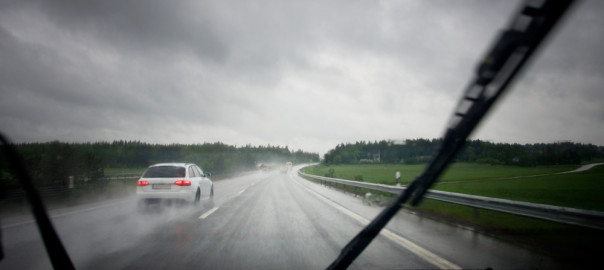In this blog entry, the Chicagoland roadside assistance experts here at Towing Chicago will detail some crucial safety procedures for jumpstarting cars during rainy or wet weather.
How to Be Careful when Jumpstarting a Car in the Rain
- Make sure to read your vehicle manual to determine whether your car can be jump started or if its circuitry is too sensitive for it.
- Wear gloves, and use an umbrella to shield yourself, the car’s inner mechanisms, the jumper wires, and the battery terminals from raindrops.
- Inspect batteries for any damage on its body or on the jump leads – if any damage is found, don’t attempt jumpstarting.
- Stay aware of other traffic on the road and safely move out of the way.
- Take off all metal jewelry that might touch battery terminals including watches, bracelets, and rings.
- Make sure that jumper cables are connected to the proper terminal, aren’t touching, are intact, and have tight connections.
- Make sure that jumper cab;es are slowly and carefully disconnected from battery terminals in the reverse order that they were attached. Don’t try to jumpstart any cracking, corroded, dry, leaking, or frozen batteries.
Procedure for Jump Starting Car in Rain
- Read your car manual and read all jumpstarting guidelines. Inspect batteries for visible damage, corrosion, cracking, or leaking. Make sure that there’s no cuts or tears on insulators, and that cables aren’t damaged. Make sure cables are attached to clamps.
- Turn off electrical devices in both vehicles including lighting, windshield wipers, radio, and ACs.
- Collect jumper cables from your vehicle.
- Find the battery terminals in both vehicles and make sure that vehicles are a foot apart but close enough together that the jump lead can get to both batteries at both ends easily.
- Don’t leave engines on. Make sure both cars are parked.
- Connect the red and black (positive and negative clamps) incredibly carefully. Connect red clamps to positive terminals, with one side attached to the dead battery and one side attached to the fresh battery, and do the same with the black clamps and negative battery terminals.
- Start the car and allow the engine to run. The battery will then charge over time. Give it 10-30 minutes. If this doesn’t work, the battery might have another issue. Once the car is working, allow the engine to run for a while.
- Disconnect cables in the reverse order that you connected the in.

